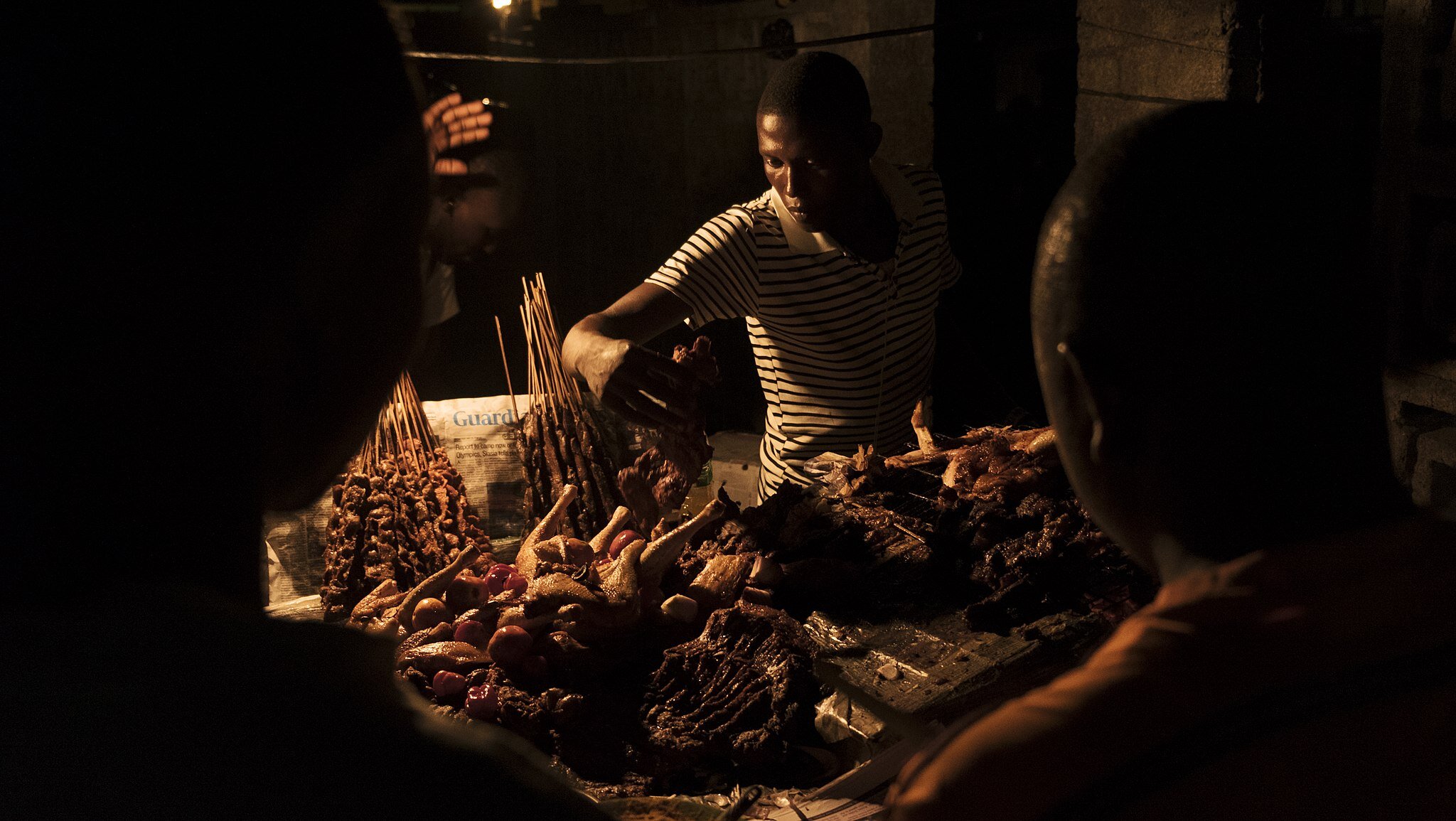Kebab Means ‘Suya’ In Lagos
By Itty Okim
At the moment, suya kebab is essential to Lagos’s nightlife. At almost every turning or junction on the streets of the city, there is someone meat. Photo by Chika Okoli, CC BY-SA 4.0, via Wikimedia Commons.
Beyond its taste, color and aroma, one of the things that makes food beautiful is how it travels—how pasta traveled from Italy to the entire world, how hamburgers did not just stay in the United States, and how kebabs have spread from Turkey, their hometown, to the entire world.
In Lagos, it is typical to find a group of men and children standing in front of a grill stand at night, chatting over skewered meat in their hands. They would be eating suya, a form kebab takes in Nigeria. Suya is also called tsire and is a unifying factor in a country like Nigeria, where people from multiple ethnic groups and religions are present.
At the moment, suya kebab is essential to Lagos’s nightlife. At almost every turning or junction on the streets of the city, there is an Aboki (a Nigerian Muslim from the northern parts) grilling kidney, liver, beef, chicken and other forms of meat under a poorly lit bulb.
But it was not always this way. In the early 1900s, there was grilled meat in different regions of the country. Kebabs came in later when missionaries and colonial masters introduced their shish kebab to the locals of Northern Nigeria. The northern part of Nigeria is dominated by the Hausa tribe and Muslims, most of whom are nomads and animal rearers. Hence, it was not any problem finding meat to make these kebabs.
“Our fathers and their fathers were nomads. It is a part of our culture and religion and so almost every Hausa young man is taught how to rear animals like cattle and camels,” explains Ibrahim, a kebabmaker in Surulere, a town considered to be the heart of Lagos.
Like many others, most of Ibrahim’s customers are people who earn very little daily and, amid their hustle to make ends meet, they almost never go a night without his suya. It shows how much of a culture eating kebabs has become for many Lagosians.
Still, suya was not a big deal until the 1960s after a good number of Hausas migrated to Lagos for commercial reasons. After it was pronounced as the capital of independent Nigeria in 1960, Lagos held more business, academic and employment opportunities than any other part of the country.
Hence, the Hausas and members of other Nigerian tribes began to migrate from rural areas to Lagos en masse. Their tomatoes, onions and proteins were in high demand in the country’s commercial capital. But it was not just their agricultural products they brought with them. They did not leave their culture, food, style, faith back at home, and this was how they introduced suya to the rest of Nigeria.
“I moved to Lagos in 1986. after one of my brothers who is now late invited me over to join him in making suya here in Surulere, Lagos,” says Ibrahim. “He taught me the recipe that Lagos loved the most and got me some of the equipment I needed. In less than a month, I had become one of the favorite suya men of many people who lived around my stand.”
Making kebabs has been his only source of income, and with no wife, he is left to cater for his two daughters by himself. He says kebabs money has just been enough to sustain him and his family over the last three decades.
Onions, tsire spice, seasonings and meat are resplendent when they come together. Photo by Honeybee5512, CC BY-SA 4.0, via Wikimedia Commons.
Over time, making kebabs has stopped being something for the Hausas only and has evolved into Nigeria's favorite nighttime snack. From Lagos to the other cities, the culture continues to spread and take various forms, the most prominent of which is called “kilishi.”
Kilishi is dried suya and it gained popularity across the country in the 1980s, when some kebab makers experimented with taking all the moisture out of the meat. With extra spice, less moisture and a far more tantalizing aroma, kilishi has almost become a luxury snack, as it is most times more expensive than regular suya.
However, in 2014, West Africa was hit with an epidemic that affected the patronage and consumption of Nigerian kebab. The Ebola virus was said to be transmitted through the consumption of poorly cooked meat, and many Lagosians feared that the meat used to make suya wasn’t cooked adequately.
“During that period, my business experienced a very great decline — the worst I have ever experienced,” says Emeka, who hawks kilishi in Lagos traffic. “People were scared of my meat and I was almost begging everyone I saw to give my skewered meat a try.”
It looked like the death of kebab culture in Lagos.
Instead, kebabmakers became more aware of how best to make suya and all that there is to culinary hygiene. Also, the consumers learned to patronize only vendors who properly grilled their meat.
Nonetheless, after a few months into 2015, the people had missed their long lost love and started eating suya again. It proves how much of an arguably unbreakable bond the people of Lagos have come to share with this type of skewered meat.
Beyond how resplendently the onions, tsire spice, seasonings and meat come together on the taste buds of their consumer, suya in Lagos has come to unite the streets and birth a steady cultural demand for great grilled meat in the city.
Thus, it is an established fact you haven’t really been to Lagos if you never had suya.


